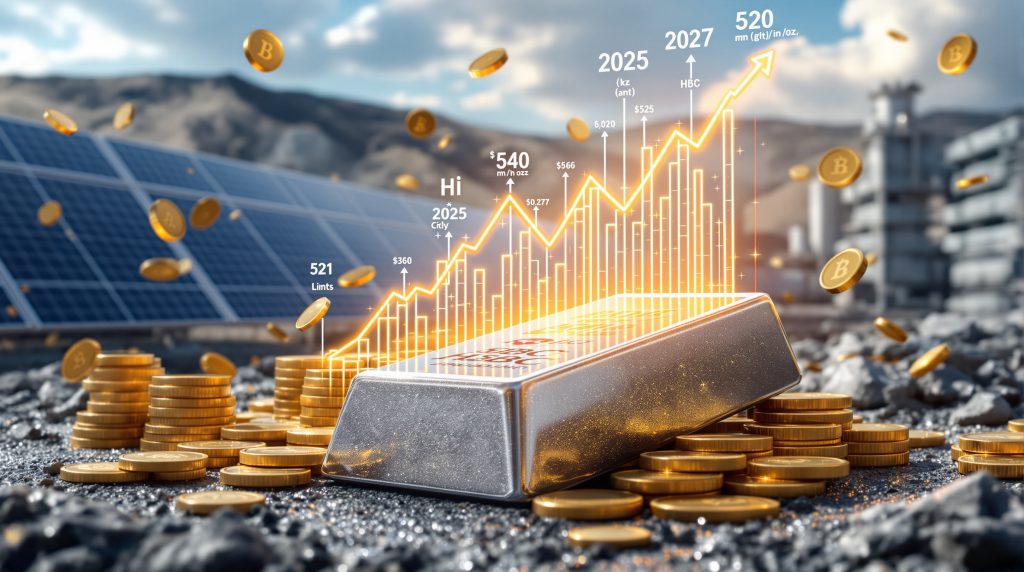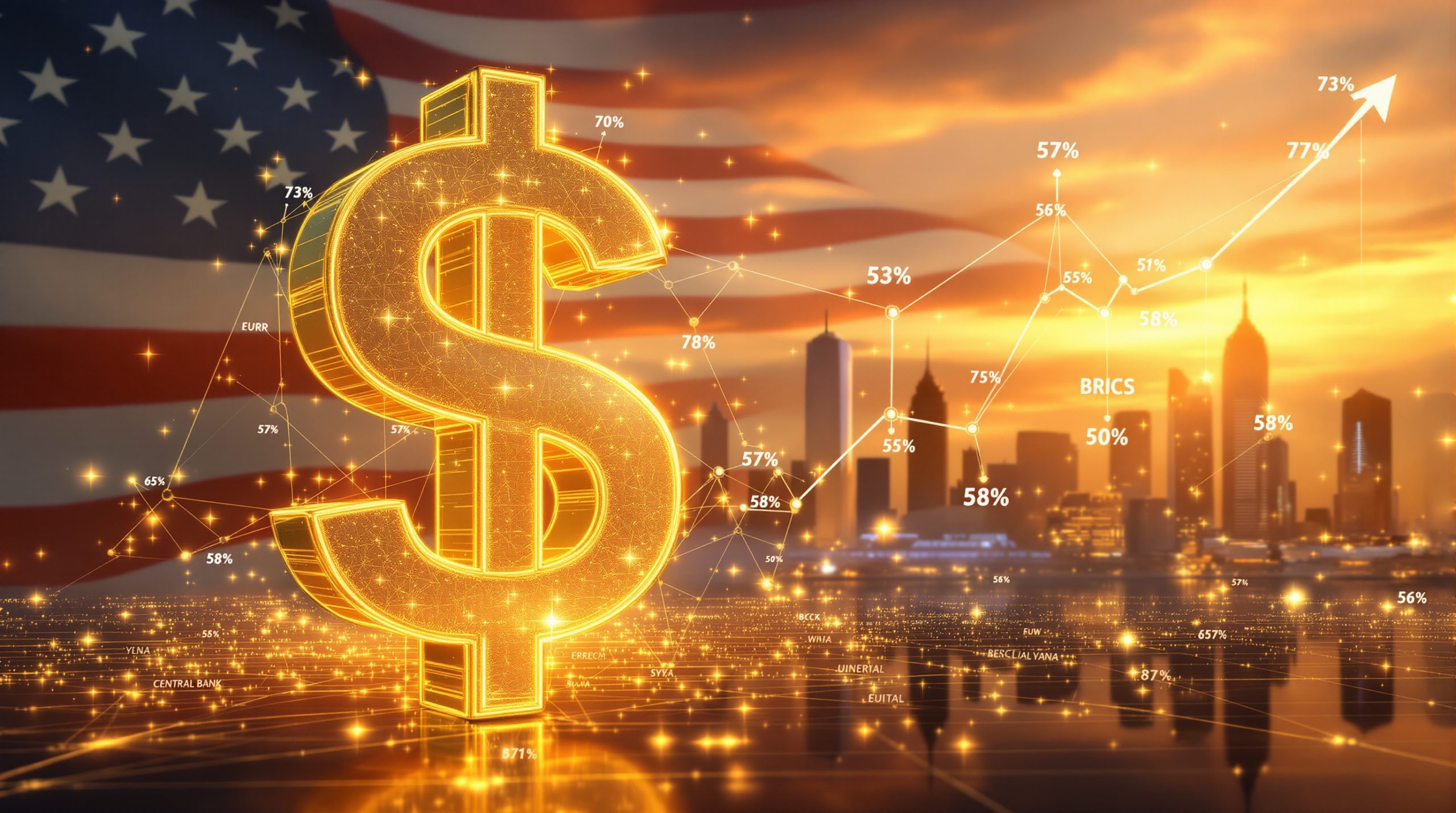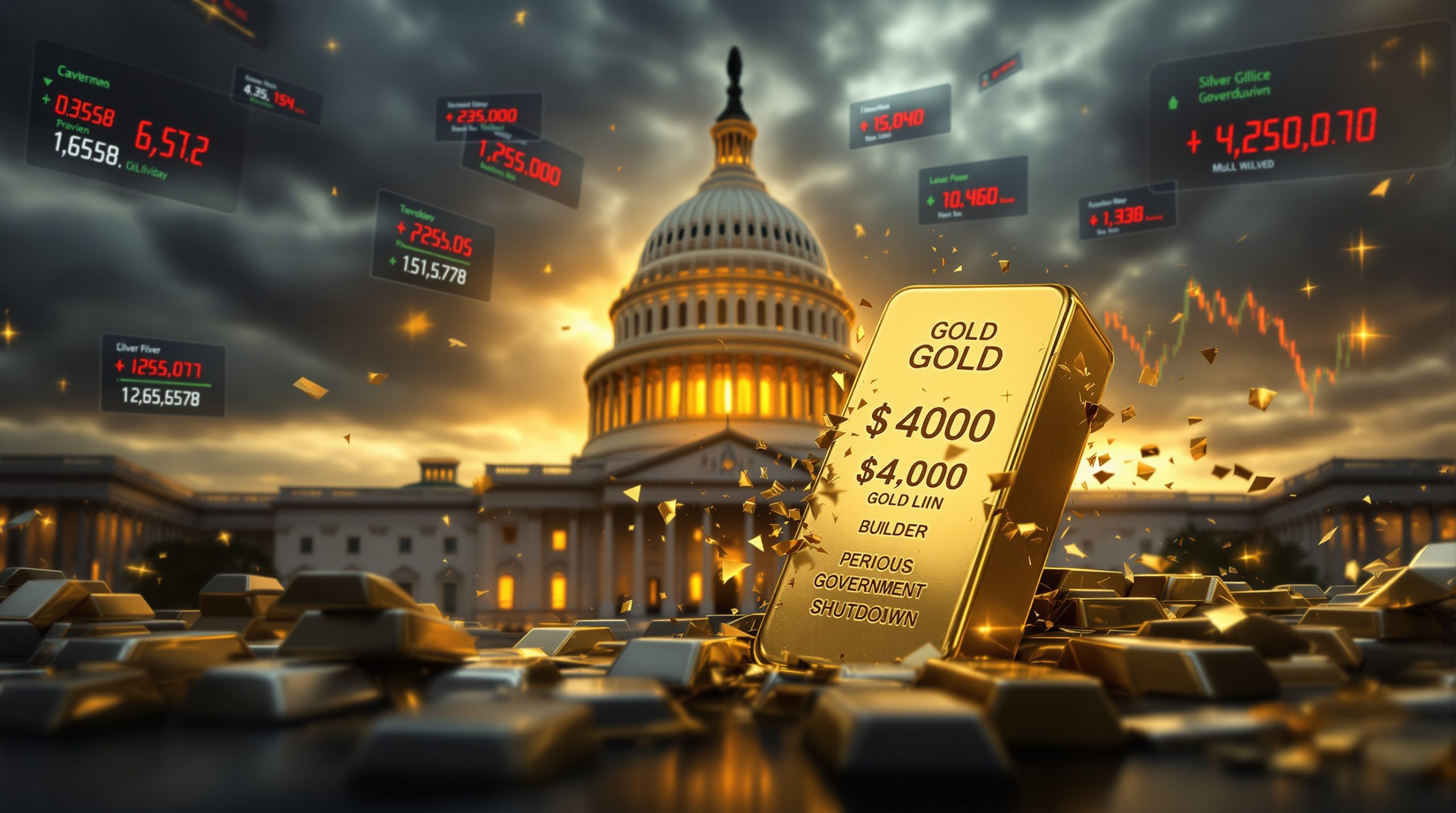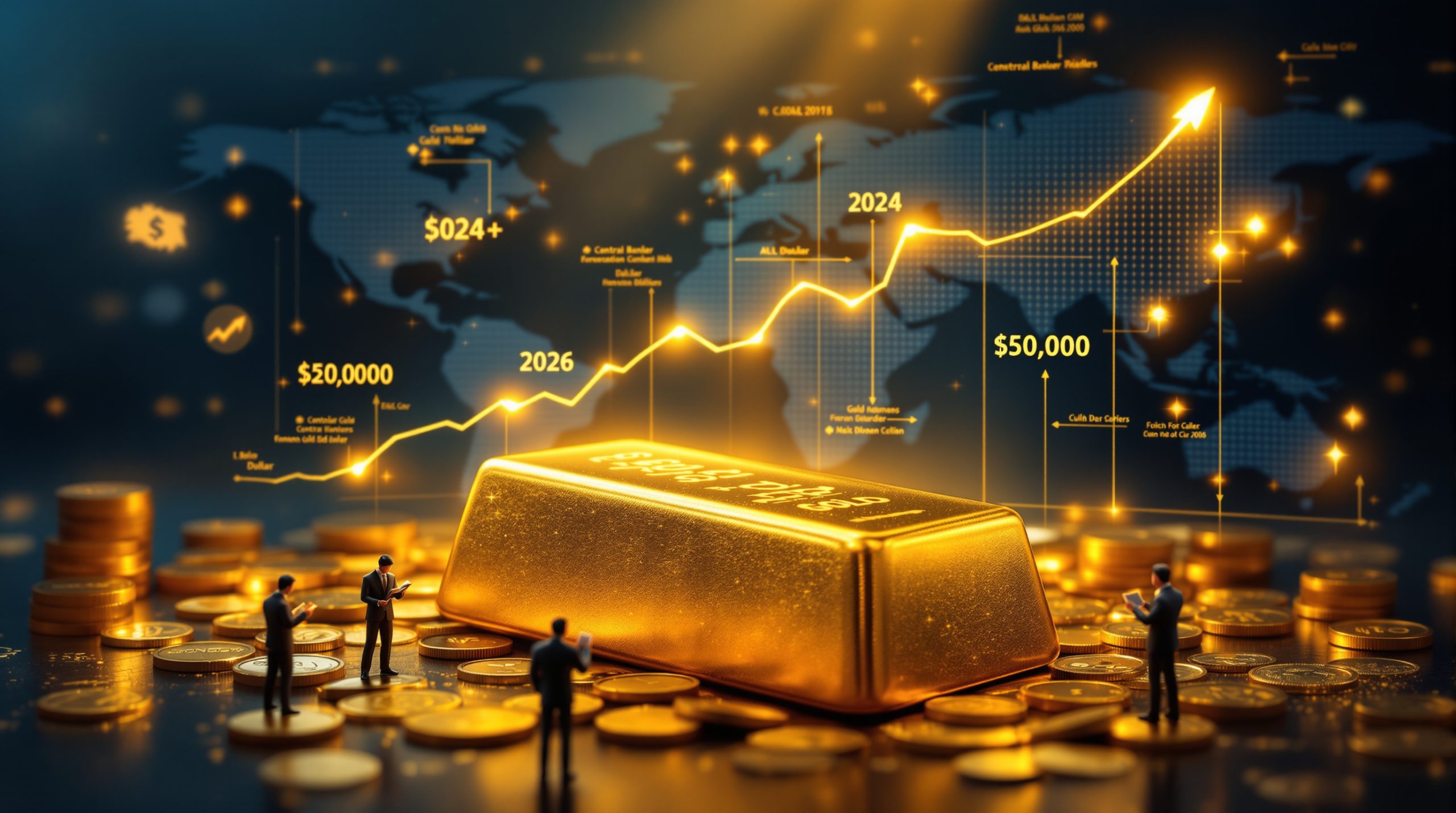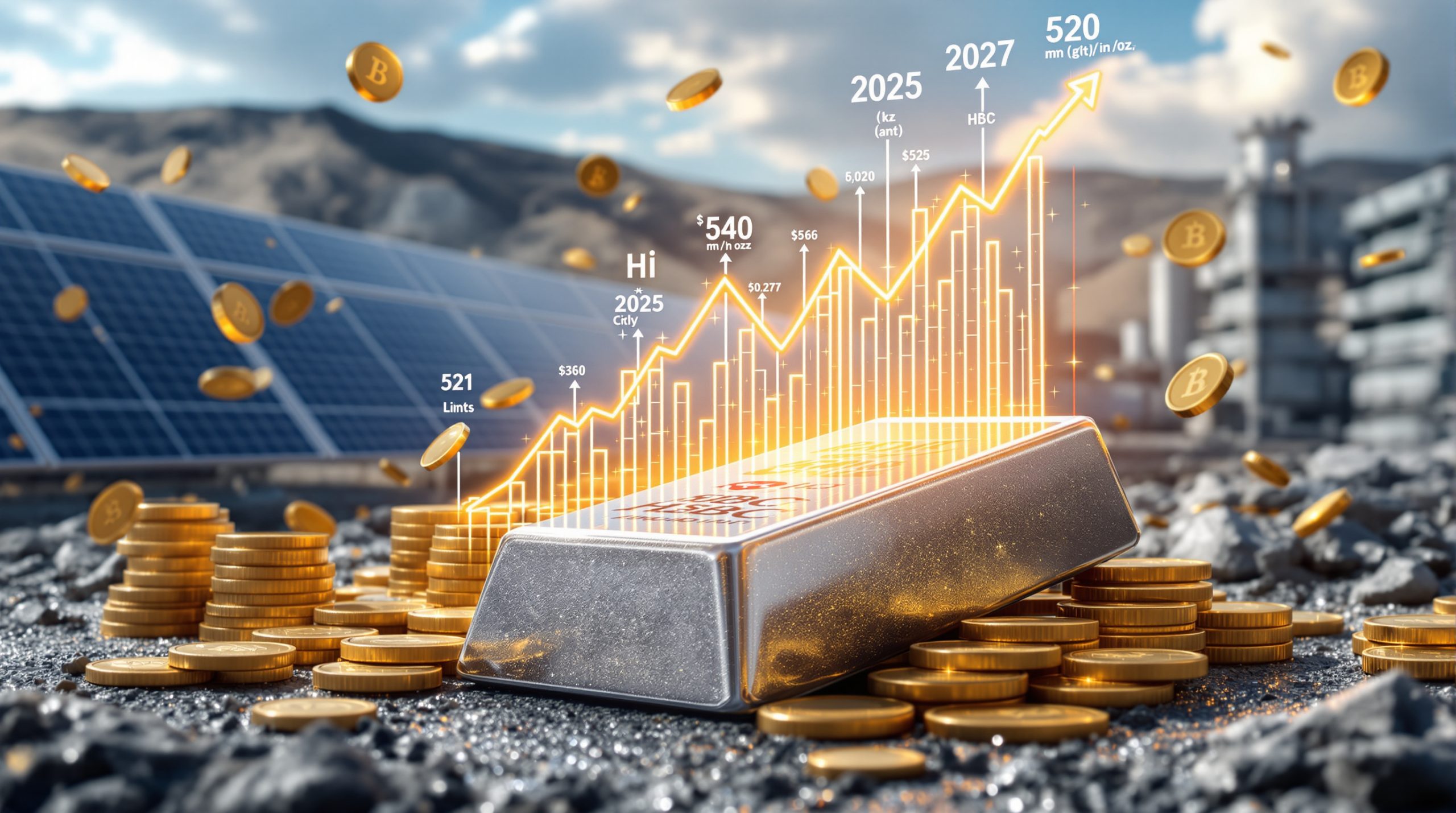Why Are Silver Prices Rising? HSBC's Bullish 2025-2027 Forecast Explained
Silver is experiencing a remarkable price surge, attracting attention from investors and market analysts alike. HSBC, one of the world's largest banking institutions, has significantly revised its silver price forecasts upward, indicating growing market confidence in the precious metal's future performance. This comprehensive analysis examines the factors driving silver's momentum and what investors might expect in the coming years.
How Are Silver Price Forecasts Changing for 2025-2027?
HSBC has substantially upgraded its HSBC raises silver price forecast, reflecting a fundamental reassessment of market conditions. The bank's revised projections suggest prices could reach levels not seen in over a decade, signaling a potentially historic bull market phase.
HSBC's Updated Silver Price Projections
| Year | Previous Forecast | New Forecast | Percentage Increase |
|---|---|---|---|
| 2025 | $35.14/oz | $38.56/oz | +9.7% |
| 2026 | $33.96/oz | $44.50/oz | +31.0% |
| 2027 | $31.79/oz | $40.00/oz | +25.8% |
The most dramatic adjustment appears in the 2026 forecast, with a remarkable 31% increase from previous estimates. These revisions aren't minor adjustments but represent a significant shift in market expectations for silver's medium-term performance.
According to the latest data from HSBC's silver outlook, HSBC attributes these upward revisions to three key factors: expectations for high gold prices, renewed investor demand, and anticipated market volatility in the coming years.
What's Driving Silver's Price Momentum?
Silver's current rally is powered by a combination of factors, creating what many market observers describe as a "perfect storm" for higher prices. Understanding these drivers provides crucial context for the metal's potential trajectory.
Gold's Gravitational Pull Effect
Gold's exceptional performance is exerting strong upward pressure on silver prices. Historically, silver tends to follow gold's direction but with greater percentage moves in both directions—a relationship often described as silver's higher beta compared to gold.
This correlation stems from several factors:
- Both metals serve as monetary alternatives during periods of economic uncertainty
- Investors often rotate between the two metals based on relative value perceptions
- Silver is frequently viewed as "poor man's gold" during precious metals bull markets
- Trading algorithms and fund strategies frequently pair the metals in their models
When gold establishes new gold all-time highs analysis, silver typically follows with a lag, often outperforming on a percentage basis once the move gains momentum.
Supply-Demand Imbalance Intensifying
The fundamental market structure for silver shows signs of tightening, with demand consistently outpacing available supply. Key factors contributing to this imbalance include:
- Mining production constraints as many silver mines operate at peak capacity
- Rising industrial applications creating inelastic demand regardless of price
- Growing investment interest from both institutional and retail participants
- Limited above-ground inventories compared to annual consumption
This combination of supply limitations and diverse demand sources creates structural support for higher prices. Market analysts note that these silver supply deficits appear more persistent than in previous silver bull markets.
What Price Range Does HSBC Expect for Silver?
HSBC's detailed forecasts provide specific guidance on expected trading ranges for silver through 2026, offering valuable insights for investors and market participants.
Near-Term Price Volatility
For the remainder of 2025, HSBC anticipates silver will trade within a range of $45.00-$53.00 per ounce. This wide band reflects several market realities:
- Increased price volatility typical of bull markets in precious metals
- Periodic profit-taking following sharp advances
- Shifting industrial demand signals as economic data fluctuates
- Varying investor sentiment influenced by macroeconomic developments
According to the bank's analysis, this volatility should be viewed as normal market behavior rather than a sign of fundamental weakness.
2026 Price Pattern Forecast
Looking ahead to 2026, HSBC projects an even wider trading range of $40.00-$55.00 per ounce, with a distinct temporal pattern:
- Higher price peaks likely concentrated in the first half of the year
- More moderate pricing expected in the second half as several factors come into play:
- London silver inventories beginning to rebuild
- Gold prices potentially stabilizing after their advance
- Additional physical supply mobilizing in response to sustained higher prices
As noted in HSBC's commentary published by Mining Weekly in October 2025: "We look for a wide $45.00-53.00/oz range for the remainder of 2025 and a wide $40.00-55.00/oz range next year with the highs likely coming in 1H'26 followed by moderating and falling prices in 2H'26 as London inventories build, gold prices are expected to moderate and greater physical supply is mobilized."
How Close Will Silver Come to Historical Records?
With HSBC's projections suggesting potential price targets above $50 per ounce, market participants are increasingly discussing the possibility of new all-time highs for silver.
Approaching Record Territory
Silver's historical peak stands at approximately $50 per ounce, achieved briefly in both 1980 and 2011 under very different market conditions. HSBC's revised forecast suggests:
- Prices could challenge this historical benchmark in the 2025-2026 window
- The $50/oz level represents both a psychological and technical resistance point
- Sustained trading above this threshold would signal a new paradigm for silver markets
Unlike previous price spikes that quickly reversed, several analysts believe the current fundamentals support a more sustainable period of elevated prices.
Historical Context for Current Rally
Understanding silver's previous price peaks provides important perspective:
-
January 1980 Peak: Silver reached $49.45/oz during the Hunt brothers' attempt to corner the market, a spike that collapsed quickly once regulatory authorities intervened
-
April 2011 Peak: Prices touched approximately $49.80/oz amid post-financial crisis quantitative easing and inflation concerns, before retreating sharply
-
2025-2026 Potential: Current fundamentals appear more balanced and sustainable than during previous spikes, potentially supporting a longer period of elevated prices
The key difference today is the diversity of demand drivers, with industrial applications providing a more stable floor than the predominantly investment-driven rallies of the past.
What Macroeconomic Factors Are Supporting Higher Silver Prices?
Beyond the specific supply-demand dynamics of the silver market itself, broader economic conditions play a crucial role in determining price trajectories.
Geopolitical Risk Premium
Ongoing global tensions have elevated the perceived value of precious metals as portfolio insurance:
- Persistent regional conflicts affecting energy and commodity markets
- Trade tensions between major economic powers
- Technology competition and supply chain security concerns
- Resource nationalism in several key mining jurisdictions
These geopolitical factors encourage investors to maintain precious metals analysis as a hedge against unexpected disruptions.
Safe-Haven Demand Dynamics
Silver continues benefiting from its dual role as both an industrial metal and a monetary asset:
- Portfolio diversification away from traditional financial assets
- Store of value characteristics during periods of currency uncertainty
- Protection against unexpected inflation or financial system stresses
- Accessibility to retail investors through various investment vehicles
This combination of industrial utility and monetary characteristics makes silver particularly attractive in the current economic landscape, where both technological advancement and economic uncertainty coexist.
How Might Industrial Demand Impact Silver Prices?
While investment sentiment often drives short-term price movements, silver's growing industrial applications provide fundamental support for long-term valuations.
Green Energy Transition Requirements
Silver plays an essential role in the global shift toward renewable energy technologies:
- Photovoltaic solar panel production requires significant silver inputs for conductivity
- Electric vehicle manufacturing increases demand for silver-containing electrical components
- Power grid modernization utilizes silver in various transmission and control systems
- Energy storage systems incorporate silver in multiple applications
These green technology applications are expected to grow substantially in coming years, providing structural support for silver demand regardless of economic cycles.
Electronics and Medical Applications
Beyond renewable energy, silver remains critical in other expanding sectors:
- Advanced electronics continue requiring silver despite miniaturization efforts
- Medical applications including antimicrobial uses have expanded significantly
- Water purification systems increasingly utilize silver's biocidal properties
- 5G infrastructure deployment requires high-conductivity components
The diversification of silver's industrial applications helps insulate demand from downturns in any single sector, creating a more robust overall demand profile than in previous market cycles.
What Could Cause HSBC's Forecast to Be Wrong?
While the current outlook appears favorable, prudent investors should consider scenarios that might deviate from HSBC's base case projections.
Potential Downside Risks
Several factors could undermine the bullish outlook for silver:
- Significant global economic slowdown reducing industrial demand
- Substantial strengthening of the US dollar, which typically pressures commodity prices
- Central bank policy shifts toward more aggressive monetary tightening
- Mining production increases exceeding market expectations
- Recycling volumes surging in response to higher prices
These factors could collectively pressure silver prices below the forecast ranges, particularly if several occur simultaneously.
Potential Upside Surprises
Conversely, several developments could push silver prices even higher than HSBC's revised forecasts:
- Acceleration of green energy investments globally, increasing industrial consumption
- Renewed financial market instability driving safe-haven demand
- Unexpected mining disruptions in key producing regions
- Institutional investor allocation shifts toward precious metals
- Retail investor participation reaching unprecedented levels
Such developments could potentially drive a silver market squeeze beyond the $60/oz level, exceeding even the most optimistic current projections.
What Does This Mean for Investors?
HSBC's revised outlook carries significant implications for different types of investors and market participants.
Investment Implications
The updated forecasts suggest several strategic considerations:
- Long-term investors may benefit from maintaining strategic allocations to silver
- Active traders should prepare for increased volatility and wider trading ranges
- Industrial users might consider hedging strategies to manage input cost risks
- Mining investors could see improved profitability metrics for primary and secondary silver producers
The anticipated wide trading ranges also suggest opportunities for options strategies that can capitalize on volatility while defining risk parameters.
Portfolio Considerations
When incorporating silver into investment portfolios, several approaches merit consideration:
- Physical silver holdings (coins, bars) provide direct exposure but require secure storage
- Silver ETFs offer convenient, liquid exposure without physical handling concerns
- Mining equities provide potentially leveraged exposure to silver prices, though with company-specific risks
- Streaming/royalty companies offer exposure with reduced operational risks compared to miners
The optimal approach depends on individual investment objectives, risk tolerance, and time horizons. Many sophisticated investors utilize a combination of these methods to gain diversified exposure to the silver market and often incorporate gold-silver ratio analysis into their decision-making process.
Silver's Brightening Outlook
HSBC's significantly upgraded HSBC raises silver price forecast reflect a fundamental reassessment of the metal's prospects over the next several years. With projections now suggesting prices could approach or exceed historical records, silver appears positioned for a potentially historic bull market phase.
The combination of strong gold prices, persistent supply deficits, expanding industrial applications, and macroeconomic uncertainties creates a supportive environment for silver. While volatility will likely remain elevated, the overall trajectory points toward substantially higher price levels than seen in recent years.
For investors, silver's unique position at the intersection of precious and industrial metals offers distinctive portfolio benefits that may prove particularly valuable in the current global economic landscape.
Disclaimer: This article is for informational purposes only and does not constitute investment advice. All investments involve risk, including the possible loss of principal. Past performance is not indicative of future results. Investors should conduct their own research and consult financial advisors before making investment decisions.
Want to Catch the Next Big Mineral Discovery Before Everyone Else?
Stay ahead of the market with real-time alerts on significant ASX mineral discoveries, powered by Discovery Alert's proprietary Discovery IQ model. Explore why major mineral discoveries can lead to substantial returns by visiting Discovery Alert's dedicated discoveries page and start your 30-day free trial today.
